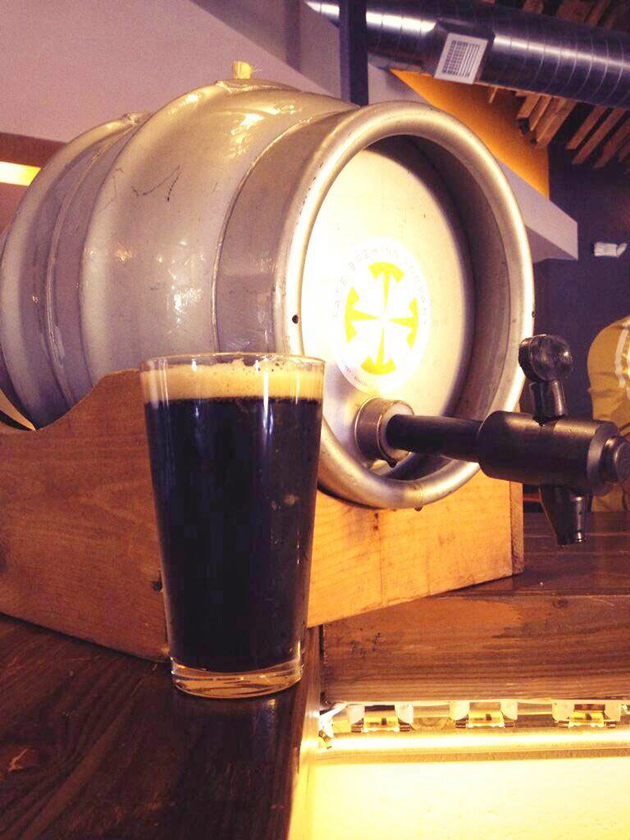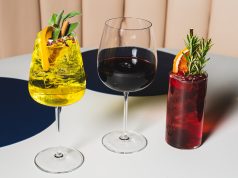
I can remember the feeling, not so long ago, of sitting down at a bar with a decent craft beer selection and being bewildered.
I didn’t have a whole lot of exposure to craft beer until I had a whole lot of it in Denver’s bars and liquor stores. Menus and beer coolers were full of terms I hardly understood — all the way down to “ale” as opposed to “lager.” I couldn’t have told you how Belgian differed from German except that they both scared me and I’ll have a Coors Light, please.
Obviously, most of my craft beer ignorance is in the past. I know what an IPA is, how it tastes and where it got its name. I know what Stone Brewing means by just labeling a beer “ale” (“hops”) and I know the difference between Wild Mountain, Crazy Mountain and Mountain Sun.
But I definitely don’t know it all. So this week I decided to dig in on a topic that’s still a mystery to me: cask ales.
Or is it real ales? Hand-drawn? Warm beer? As with so many brewing practices, there are overlapping, similar and exactly-the-same terms on the topic. The basic concept is, cask ales are unfiltered and unpasteurized beers that are naturally carbonated — no carbon dioxide added. Cask and cask-conditioned are the same term; real ale encompasses both cask-conditioned and bottle-conditioned beers. Hand-drawn, meanwhile, is just a way of referring to a cask ale on tap; since it’s not in a keg, it’s poured by gravity, not by what the industry calls “magic keg physics.”
Where do the famous “firkins” come into all of this? A firkin is a volume measurement of about 40 liters or 10.8 gallons, and it’s also a cask of that size.
Cask beer is how beer used to be made, before kegs were a concept and before CO2 tanks were a brewery fixture. Casks or barrels were just the best way to store a whole lot of liquid. Thus the lower, natural carbonation and the higher temperature — cask ales should come out between 45 and 55 F, not the upper 30s or low 40s of regular taps (and yes, 45 to 55 is still cold; my “warm beer” above is a joke).
Breweries around Boulder have embraced cask ales to various degrees, like BRU’s basic policy of unfiltered and bottle-conditioned beers, Mountain Sun’s tappings after every full moon and weekly cask tappings on Wednesdays at FATE. Avery and Boulder Beer almost always have a cask beer.
But enough with the nerdiness. What’s the point?
“I personally love them,” BRU’s Ian Clark says in an email. “The low alcohol, low carbonation with a slight bit of oxidation all lends to a richer and maltier beer.”
“The appeal is that cask beer has less carbonation than most conventional beers,” says Mountain Sun’s director of brewing operations, John Fiorilli, in an email. “This lower level of carbonation is considered to be ‘softer’ on the palate to the customer.”
It’s definitely true of Boulder Beer’s Buffalo Gold on cask. Carbonation is still evident, but reduced, and the beer’s slightly warmer than most. It’s super-smooth and creamy; compared to standard Buff Gold, it’s so malty it’s almost an amber. Honestly, it’s barely the same beer. It’s a lot like making an Avalanche Ale creamier.
At Avery, the selection is a favorite of mine, Old Jubilation, a winter warmer/strong ale that’s typically heavy on malt, alcohol and molasses. The cask version, again, is very creamy and soft, although I think it softens the alcoholic punch of Old Jube a little too much.
In my book, cask ale is a mixed bag: At its best, it’s like riding over fresh pavement on brand-new tires; at its worst, it’s like watching TV through a fish tank.
As always, draw your own conclusions. At least now when “Cask Tapping” shows up on an event poster, you’ll know just what slightly warmer water you’re diving into.
Respond: [email protected]














